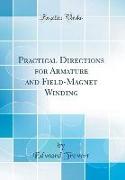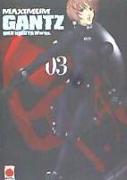- Start
- Practical Directions for Armature and Field-Magnet Winding (Classic Reprint)
Practical Directions for Armature and Field-Magnet Winding (Classic Reprint)
Angebote / Angebote:
Excerpt from Practical Directions for Armature and Field-Magnet WindingAll magnets are surrounded by what is known as a field of force. The familiar experiments with the magnet and iron filings give us some notion of the character of this field, for the filings always adjust themselves along certain lines, generally curves, depending for their shape upon the form of the magnet.The region surrounding the magnet is conceived as being penetrated by lines of force, which radiate from the poles and are parallel to the lines of iron filings. They emerge from the magnet something like the bristles of a brush, and always form closed curves, that is, they always return by longer or-shorter routes to the body of the magnet and through it to the starting point. It is for this reason that it is impossible to make a unipolar magnet. Every magnet must have two poles, a north and south.These lines do not pass with equal facility through all substances. Most bodies offer a highresistance to them, but iron, steel, nickel, and one or two others to a less degree, are good magnetic conductors. Magnetism always follows the path of least resistance, and with a given magnetizing force the intensity of the resulting magnetism is enormously increased by the presence of iron. It is for this reason that we use iron in the fields of our dynamos and motors and we shall see later that it is of the highest importance that the magnetic circuit or path over which the mag netic force passes should have a large cross section and a low resistance.Whenever a conductor of electricity is, passed through the field of force surrounding a magnet, at right angles to the lines, an electromotive force is set up in it, depending upon the length of the conductor, the speed at which it moves, and the intensity of the field. This fact is the one utilized in the construction of dynamos, and forms the basis of our calculations, for, knowing the strength of the field magnets, the length of the wire on the armature, and the speed at which it revolves, we have all the data necessary to calculate our electro motive force.About the PublisherForgotten Books publishes hundreds of thousands of rare and classic books. Find more at www.forgottenbooks.comThis book is a reproduction of an important historical work. Forgotten Books uses state-of-the-art technology to digitally reconstruct the work, preserving the original format whilst repairing imperfections present in the aged copy. In rare cases, an imperfection in the original, such as a blemish or missing page, may be replicated in our edition. We do, however, repair the vast majority of imperfections successfully, any imperfections that remain are intentionally left to preserve the state of such historical works.
Folgt in ca. 10 Arbeitstagen


